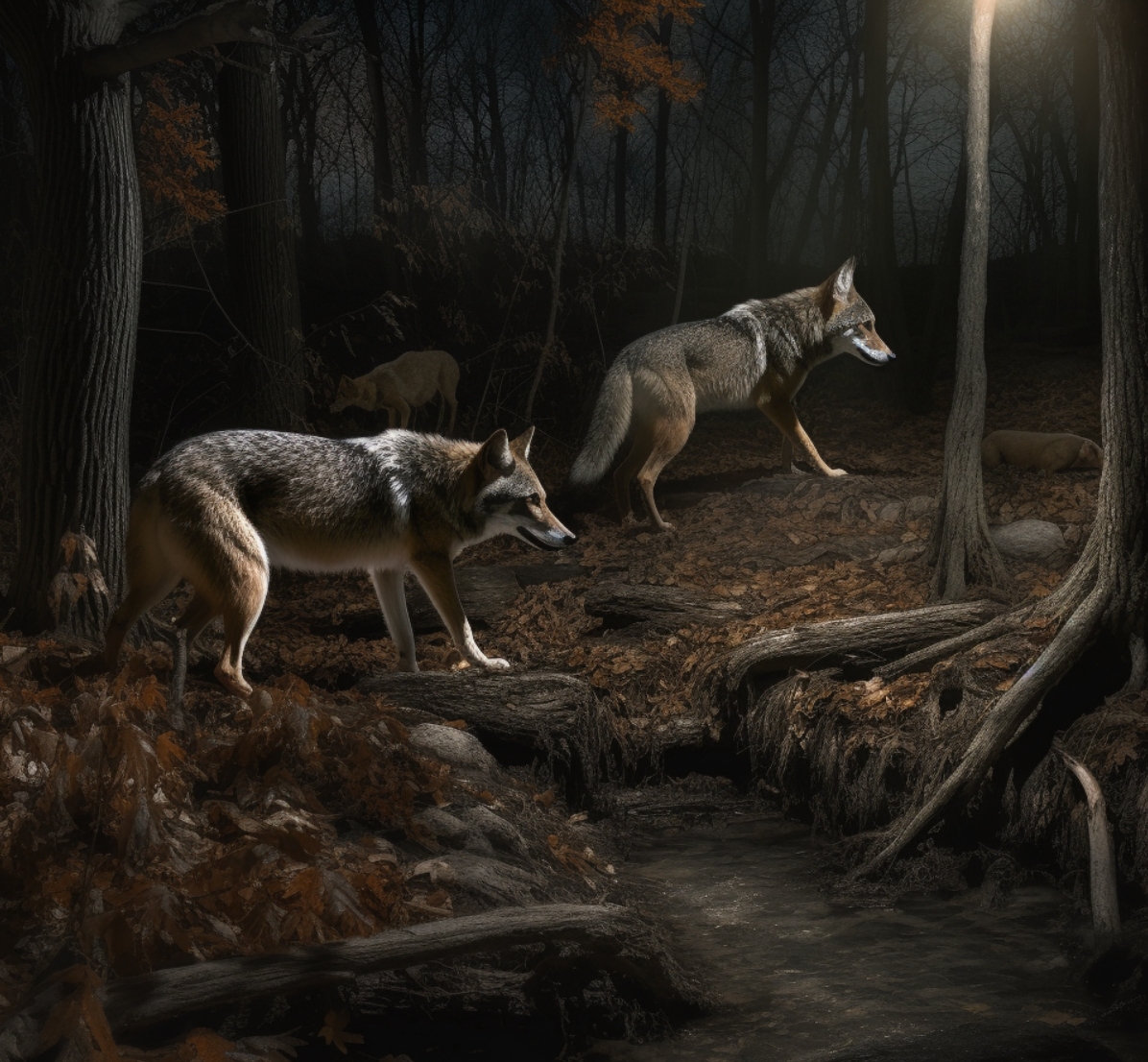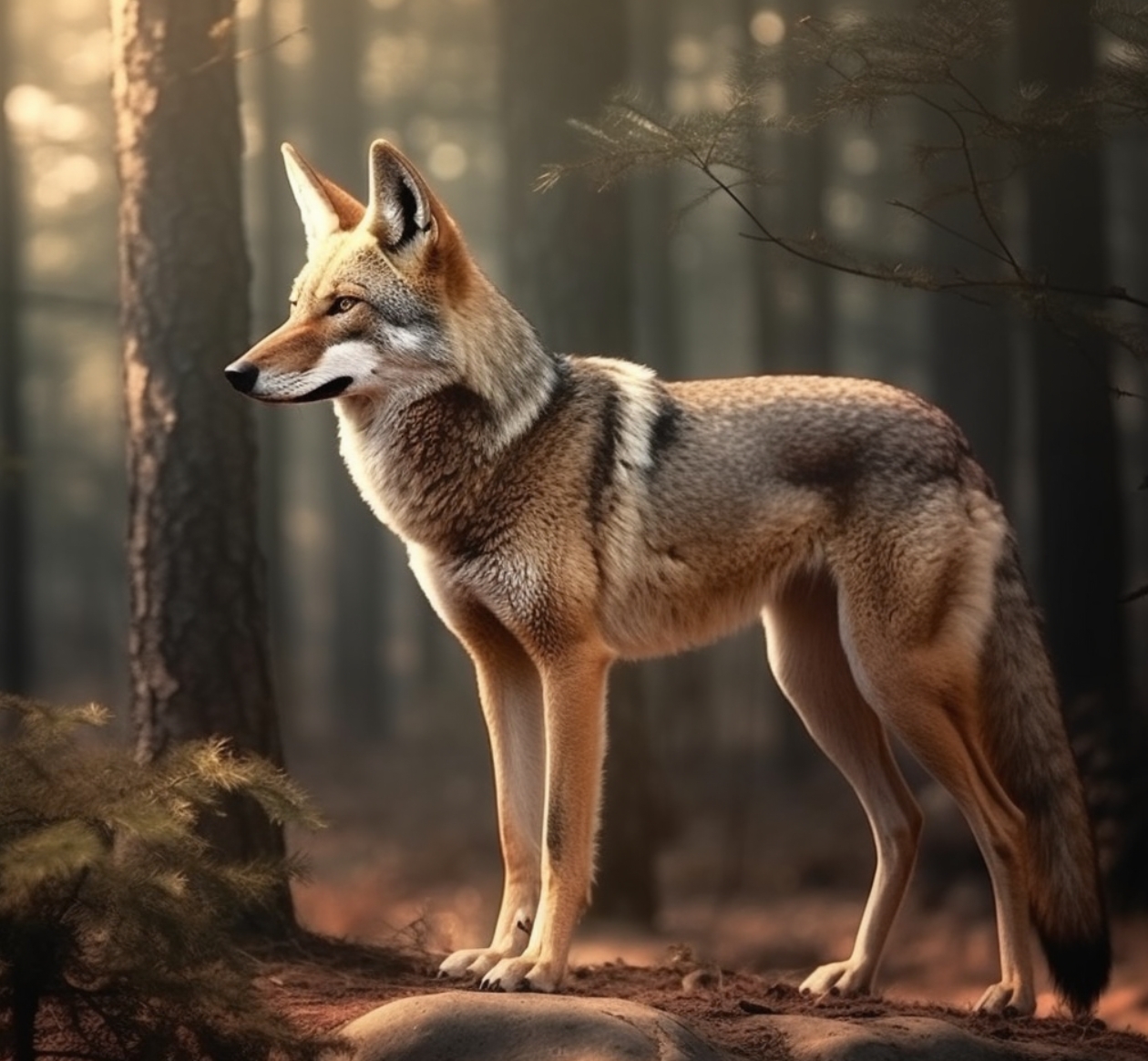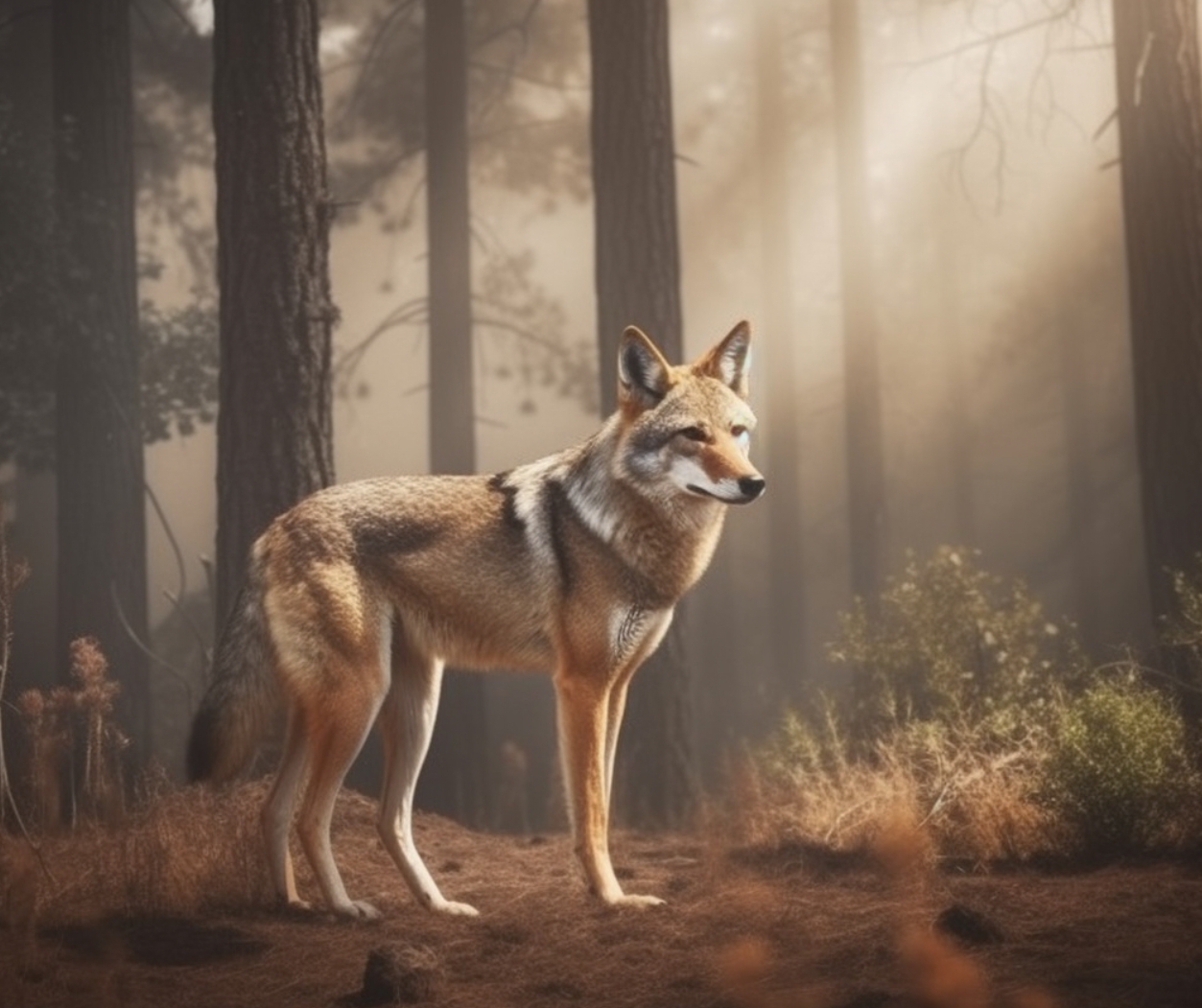Coyotes are highly adaptable animals that are known for their cunning and ability to survive in various environments. They have a diverse diet and are often seen as a nuisance in many areas due to their predatory nature. But, what eats coyotes? Let’s dive into the fascinating world of coyote predators and learn about the creatures that keep these cunning canines in check.
The Circle of Life: Coyote Predators
Contents
While coyotes are skilled hunters and have few natural enemies, they are not immune to predation. The following animals are known to prey on coyotes:
- Mountain Lions: Also known as cougars or pumas, mountain lions are one of the top predators in North America. They can easily overpower a coyote with their strength and speed.
- Wolves: These larger canines are known to engage in territorial disputes with coyotes and have been documented killing them.
- Bears: Although not a primary food source for bears, they have been known to attack and kill coyotes on occasion, especially when competing for food or protecting their cubs.
- Eagles: While it may be rare, large birds of prey, such as golden eagles, have been known to snatch young coyotes or attack injured ones.
- Humans: As coyotes can pose a threat to livestock, pets, and even people, humans often hunt or trap coyotes to protect their property and safety.
Mountain Lions: Stealthy and Powerful Hunters
Mountain lions are stealthy predators that use their powerful muscles to take down their prey. They usually prefer larger prey such as deer, but coyotes can make for an opportunistic meal. You can read more about the predator-prey relationship between mountain lions and coyotes here.
Wolves: The Canine Rival
Wolves are the larger cousins of coyotes and are known to be more aggressive. They often compete for the same resources, leading to territorial disputes and violent encounters. Wolves are known to hunt in packs, which gives them a significant advantage over the smaller, solitary coyote.
Bears: Formidable Foes
Bears, such as grizzly and black bears, are not known to actively hunt coyotes, but they will attack them if they feel threatened or if they’re competing for food. Coyotes should be cautious in areas where bears are present, as these powerful predators can easily overpower them.
Eagles: Aerial Predators
Golden eagles and other large birds of prey have been known to snatch up young or injured coyotes. While it is a rare occurrence, it is a stark reminder that even the cunning coyote isn’t completely safe from predation.
Humans: The Apex Predator
As the ultimate apex predator, humans have the most significant impact on coyote populations. Due to their cunning nature and adaptability, coyotes have become a problem in many areas where they prey on livestock and pets. As a result, humans often take measures to get rid of coyotes on their property or protect themselves and their animals from coyote attacks.
Protecting Your Property from Coyotes
Coyotes can be a nuisance, but there are several ways you can protect your property and keep them at bay. Here are some useful tips and techniques to help safeguard your home from these clever creatures.
- Build a Coyote Fence: A sturdy fence can deter coyotes from entering your property. Learn how to build a coyote fence that is high enough to prevent them from jumping over. A good rule of thumb is to build a fence at least 6 feet tall, as coyotes can jump surprisingly high.
- Remove Attractants: Make sure to secure your trash cans, clean up pet food, and remove any other food sources that might attract coyotes. Eliminating easy meals will make your property less appealing.
- Scare Tactics: Employing scare tactics can help keep coyotes at a distance. Try using motion-activated lights or sprinklers, or learn how to scare coyotes away with noisemakers or other deterrents.
- Keep Pets Safe: Coyotes have been known to attack pets, so keep them indoors or in secure enclosures, especially during the night when coyotes are most active.
- Coyote Repellents: There are various repellents available on the market that can help deter coyotes from your property. Some options include chemical deterrents, ultrasonic devices, or even natural predator urine to ward off these curious canines.
The Curious Behavior of Coyotes
Coyotes exhibit a wide range of fascinating behaviors that can help us understand their way of life and how they interact with other animals and their environment.
Vocalizations
Coyotes are known for their eerie vocalizations, which include howls, yips, and barks. They use these sounds to communicate with other coyotes, establish territory, and locate pack members. The chilling screams of coyotes can be particularly haunting, especially during the night when they are most active.
Hunting Strategies
Coyotes are opportunistic hunters with a diverse diet. They prey on rodents, rabbits, birds, and even larger animals such as deer. They also scavenge for carrion and consume fruits and vegetables. Coyotes are known to be solitary hunters, but they will occasionally hunt in packs to take down larger prey.
Speed and Agility
Coyotes are nimble animals, capable of reaching impressive speeds when chasing prey or evading predators. They can run as fast as 40 mph, making them difficult for many animals to catch. Their agility and cunning also help them escape danger and outsmart potential predators.
Social Structure
Coyotes typically form family units consisting of a mated pair and their offspring. They work together to defend their territory and raise their young. Coyotes are also known to form loose alliances with other coyotes, particularly when hunting large prey or defending against larger predators.
Coyotes and Human Interaction
While coyotes usually avoid humans, they have been known to come into conflict with people, especially when their habitats overlap. It’s essential to be aware of coyote-human interactions and take precautions to avoid potential danger.
Coyote Attacks on Humans
Coyote attacks on humans are rare but can happen, especially when coyotes become habituated to humans and lose their natural fear. In most cases, coyotes will attack if they feel threatened or cornered, or if they are sick or injured. To minimize the risk of an attack, avoid approaching or feeding coyotes, and never corner them. Keep a safe distance, and teach children to respect wildlife and give them space.
Calling Coyotes at Night
Some people enjoy the thrill of calling coyotes at night as a form of hunting or wildlife observation. This activity involves using electronic or mouth calls to mimic the sounds of prey or other coyotes to attract them. It’s crucial to practice responsible and ethical hunting techniques if you choose to call coyotes and always follow local hunting regulations.
Coyote Habitats and Adaptability
Coyotes are incredibly adaptable animals and can be found in a wide range of habitats, from forests and grasslands to urban and suburban environments. As human populations expand and encroach on coyote habitats, these clever canines have learned to adapt and even thrive in our neighborhoods. This adaptability has contributed to their increased interaction with humans and the need for effective coyote management strategies.
Coyotes and Disease
Coyotes can carry diseases such as rabies, distemper, and parvovirus, which can be transmitted to humans and pets. It’s essential to vaccinate your pets and maintain a clean and secure environment to minimize the risk of disease transmission. If you encounter a sick or injured coyote, do not approach it; instead, contact your local animal control or wildlife agency for assistance.
Conclusion: The Complex World of Coyotes
Coyotes are fascinating creatures that play a crucial role in maintaining the balance of ecosystems across North America. While they face predation from mountain lions, wolves, bears, eagles, and humans, their adaptability and cunning have allowed them to thrive in a variety of environments.
Frequently Asked Questions
What is a coyote predator?
A coyote predator is an animal that hunts and preys on coyotes. While coyotes are skilled hunters and have few natural enemies, they can still fall victim to predation by larger animals such as mountain lions, wolves, bears, and even large birds of prey like eagles. Additionally, humans can also be considered coyote predators, as they sometimes hunt or trap them to protect their property, pets, and livestock.
What are coyotes’ biggest predators?
Coyotes’ biggest predators are mountain lions, wolves, and bears. Mountain lions, also known as cougars or pumas, are powerful hunters that can easily overpower a coyote. Wolves, being larger canines, often engage in territorial disputes with coyotes and have been documented killing them. Bears, although not a primary food source, may attack and kill coyotes when competing for food or protecting their cubs.
Will a coyote eat a coyote?
Coyote cannibalism is rare, but it can occur under certain circumstances, such as when food resources are scarce or when a dominant coyote is asserting its dominance over a weaker individual. It’s important to note that this behavior is not common and is generally seen as an exception rather than the rule.
What can beat a coyote?
Several animals can potentially defeat or kill a coyote, including mountain lions, wolves, bears, and large birds of prey like eagles. Additionally, humans can pose a threat to coyotes, as they often hunt, trap, or take other measures to protect their property and livestock from these cunning canines.
Do coyotes eat dead?
Yes, coyotes are opportunistic feeders and will readily scavenge carrion (dead animals). They have a diverse diet that includes not only hunting live prey but also consuming dead animals they come across. This scavenging behavior helps coyotes survive in various environments and contributes to their adaptability.





